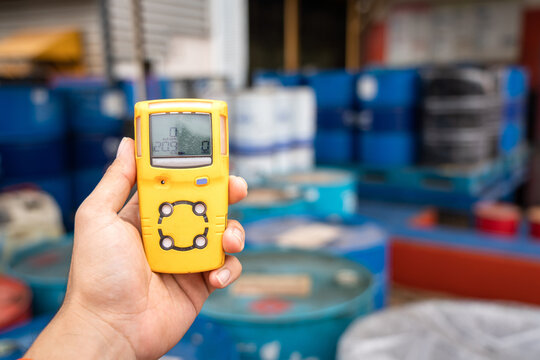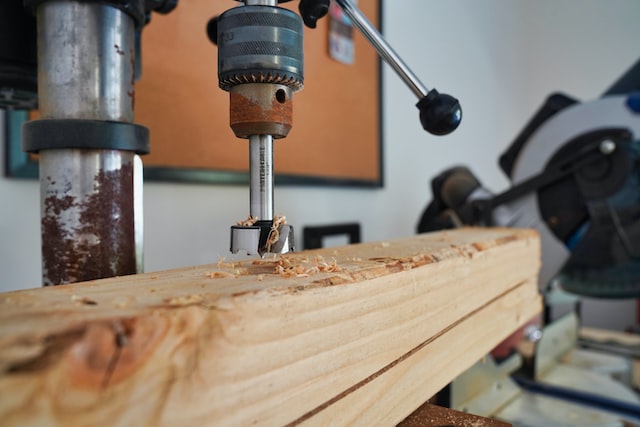
Gas Detection & Equipment
Introduction:
Gas detection equipment and monitoring are essential components of many industrial and construction workplaces. Gas detectors are designed to detect and measure the presence of various gases in the air, including Oxygen, Carbon Dioxide, H2S, and LEL. In this toolbox talk, we will discuss the types of gas detection equipment, different methods of monitoring, and best practices for ensuring the safe operation of gas detection equipment.
Types of Gas Detection Equipment:
There are several types of gas detection equipment available, each with its own benefits and limitations. The most common types of gas detection equipment include:
Portable Gas Detectors:
Portable gas detectors are designed to be worn by workers and can be used to monitor gas levels in a specific area. These detectors are typically battery-operated and can provide real-time readings of gas levels. Portable gas detectors are commonly used in confined spaces, such as tanks and vessels, and in areas where gas leaks are possible.
Fixed Gas Detectors:
Fixed gas detectors are permanently installed in specific locations and can provide continuous monitoring of gas levels. These detectors are typically connected to an alarm system, which can alert workers in the area if gas levels exceed safe limits. Fixed gas detectors are commonly used in areas where gas leaks are likely to occur, such as refineries and chemical plants.
Personal Gas Monitors:
Personal gas monitors are similar to portable gas detectors but are designed to be worn by individual workers. These monitors can provide real-time readings of gas levels and can alert workers if gas levels exceed safe limits. Personal gas monitors are commonly used in areas where workers are exposed to hazardous gases, such as in welding and cutting operations.
Methods of Gas Monitoring:
There are several methods of gas monitoring available, each with its own benefits and limitations. The most common methods of gas monitoring include:
Continuous Monitoring:
Continuous monitoring involves the use of fixed gas detectors, which are permanently installed in specific locations and provide continuous monitoring of gas levels. This method is ideal for areas where gas leaks are likely to occur and where workers may be exposed to hazardous gases for an extended period.
Intermittent Monitoring:
Intermittent monitoring involves the use of portable gas detectors or personal gas monitors, which are worn by workers and provide periodic readings of gas levels. This method is ideal for areas where gas leaks are less likely to occur but where workers may still be exposed to hazardous gases.
Area Monitoring:
Area monitoring involves the use of multiple fixed gas detectors, which are installed in specific locations to provide an overall picture of gas levels in an area. This method is ideal for large areas where gas leaks are possible and where workers may be exposed to hazardous gases.
Monitoring for Oxygen:
Oxygen is essential for human life, and low levels of oxygen can be dangerous or even fatal. Gas detectors designed to monitor oxygen levels typically use electrochemical sensors to detect changes in oxygen concentration. These detectors can provide real-time readings of oxygen levels and can alert workers if levels fall below safe limits.
Monitoring for Carbon Dioxide:
Carbon dioxide is a colorless and odorless gas that can be dangerous in high concentrations. Gas detectors designed to monitor carbon dioxide levels typically use infrared sensors to detect changes in carbon dioxide concentration. These detectors can provide real-time readings of carbon dioxide levels and can alert workers if levels exceed safe limits.
Monitoring for H2S:
Hydrogen sulfide (H2S) is a colorless and highly toxic gas that can be lethal in high concentrations. Gas detectors designed to monitor H2S levels typically use electrochemical sensors to detect changes in H2S concentration. These detectors can provide real-time readings of H2S levels and can alert workers if levels exceed safe limits.
Monitoring for LEL:
Lower Explosive Limit (LEL) is the lowest concentration of a gas or vapor that can ignite in the presence of an ignition source, such as a spark or flame. For example, the LEL for methane gas is 5% by volume. If the concentration of methane gas in the air is below 5%, it is too lean to ignite. However, if the concentration exceeds 5%, it can ignite and cause an explosion.
LEL monitoring is essential in a wide range of industries, including oil and gas, chemical manufacturing, and wastewater treatment. Common gases that are monitored for LEL include methane, propane, and butane. LEL monitoring is typically done using a combustible gas detector, which measures the concentration of combustible gases in the air and alerts workers if the concentration exceeds a certain threshold.
Conclusion:
In conclusion, gas detection equipment and monitoring are essential for ensuring the safety of workers in environments where hazardous gases may be present. Proper selection, placement, and maintenance of gas detection equipment, including combustible gas detectors, oxygen monitors, CO2 monitors, and H2S monitors, are vital for keeping workers safe from gas-related hazards. It is important to choose the appropriate type of gas detection equipment and monitoring methods based on the specific needs of your workplace and to regularly calibrate and maintain the equipment to ensure accurate readings and proper functioning.









